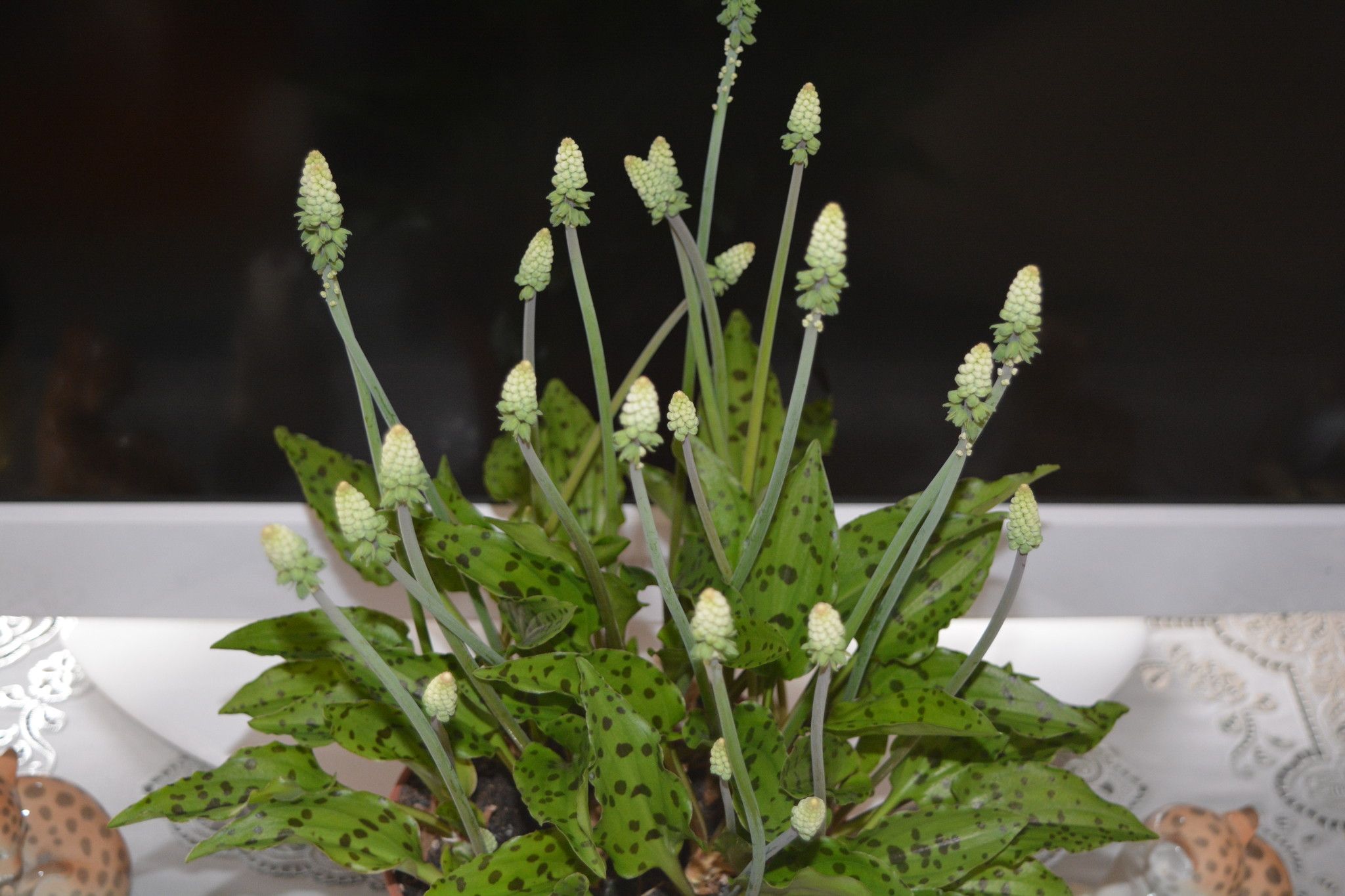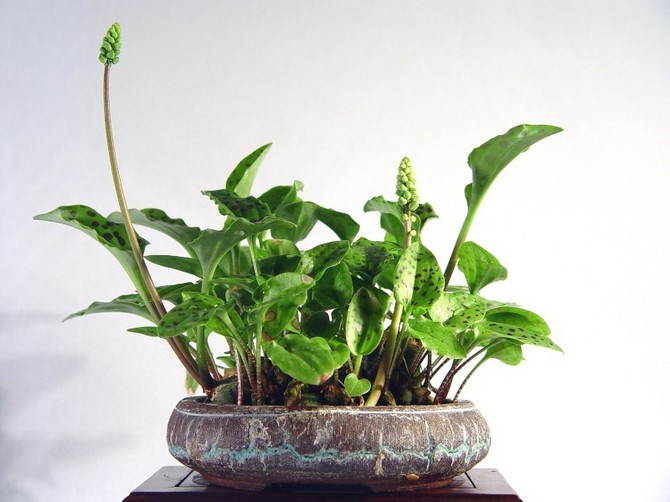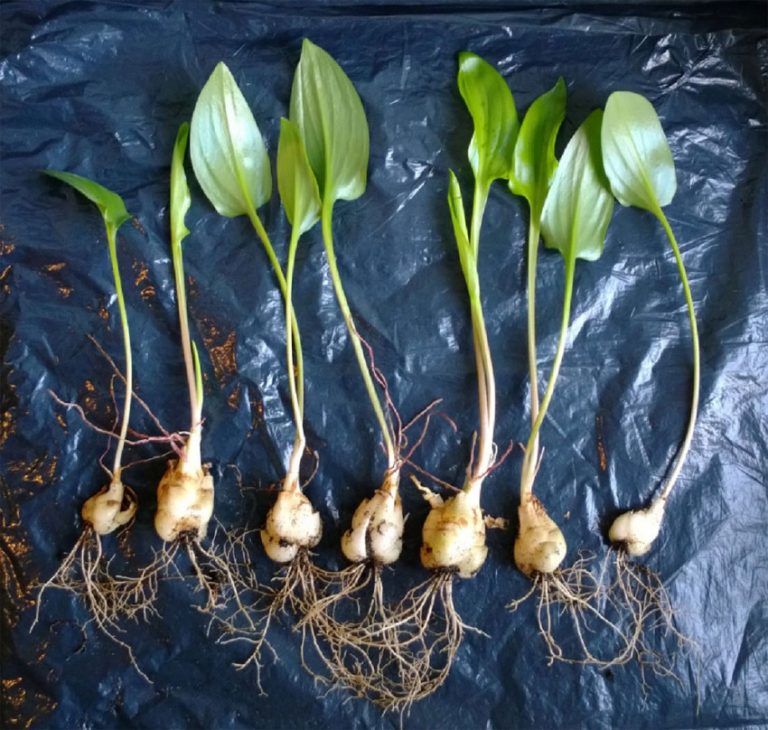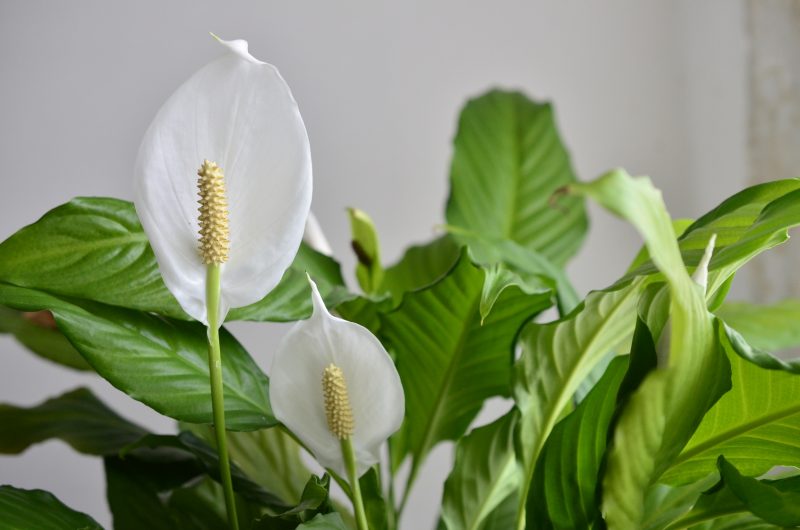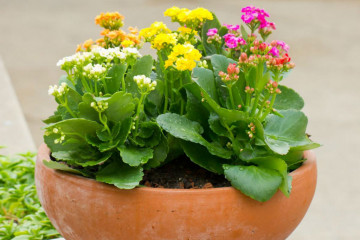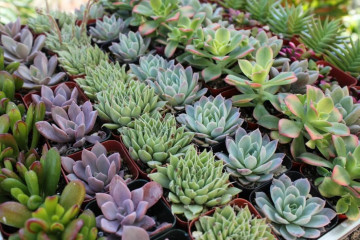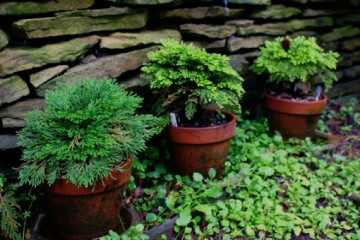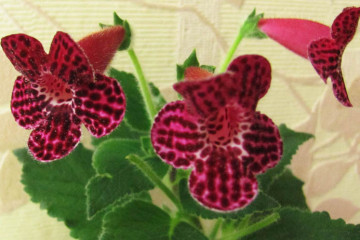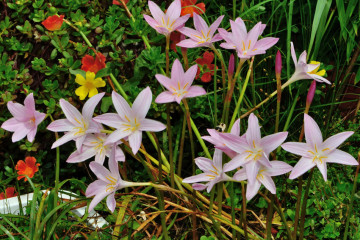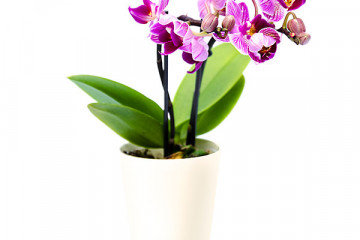Drimiopsis: home care and the main types of flower
Content:
Drimiopsis is an excellent indoor plant for those who want to bring more greenery and freshness to the interior. It does not bloom brightly, but it is unassuming to care for and has a long lifespan. These characteristics make it especially attractive to beginners who are just gaining experience in floriculture.
Main types
Drimiopsis is an East African bulbous plant, the second name of which is "ludeburia". This genus belongs to the Asparagus family, the Hyacinth subfamily.
The height of the flower reaches 10-50 cm, depending on the growing conditions and variety. It has elongated long leaves with a pointed end, forming a dense, but compact bush. The color of the leaves can be either monochromatic rich green or spotted.
This plant blooms inconspicuously - brushes of small flowers of a light shade are formed on the peduncles. The flowering looks, though not bright, but unusual.
The biological name of this flower is Ledeburia, in honor of the explorer Karl Frindich von Ledebour.
A brief description of the main types of Drimiopsis:
- Drimiopsis Kirk (Butrioid). It has tough, smooth lanceolate green leaves with spots of a grayish or darker shade. They can reach a length of 40 cm, while the petioles are short. At the base of the flower is a white rounded bulb. Peduncles 20-40 cm long, there are few flowers on them, painted in a milky or white color;
- Drimiopsis Spotted (Maculata). The leaves are wide, oval in shape (up to 12 cm high, up to 7 cm wide), located on long (up to 15 cm) petioles. The edges of the leaves are slightly corrugated, with many large dark specks scattered on a light green background. The spots become less noticeable in the fall and brighter in the spring. The clusters of the inflorescences are pale yellow, cream, white or gray. During the dormant period, the flower sheds part of the foliage;
- Drimiopsis Striped (Variegated). In appearance, it looks like a drimiopsis pickaxe, but instead of spots it has dark longitudinal stripes on the leaves. It multiplies and grows quickly in almost any conditions, which makes this species attractive for growing at home;
- Drimiopsis Purple. It has wide, fine-wavy leaves along the edges with pronounced dark spots on the surface and a pointed end. Differs in a purple shade of petioles at the base of the leaves, for which it got its name;
- Drimiopsis Dolomiticus. It stands out against the background of other species by its diminutiveness - small heart-shaped leaves with a spotted color do not have petioles, they are located close to the ground. During flowering, the leaves wrap around the peduncles, at the end of which a brush of light flowers blooms. Separated from each other flower stalks with leaves look unusual and beautiful.
Most often, amateur flower growers have Kirk's and Spotted drimiopsis. Home care for them is simple, while the varieties have good decorative effect.
Home care
The first thing you need to pay attention to before buying a plant is recommendations for its placement in the room. Place the Ledeburia pot on the south, southwest, or southeast window. In the back of the room or in the north, it will survive, but over time it will become less decorative.
Watering
Watering drimiopsis is necessary in a moderate mode, as the substrate dries. Excessive moisture can lead to rotting of the plant bulb and, accordingly, to its death.
Water for irrigation should be at room temperature, kept for at least a day or driven through a high-quality filter. The peculiarities of the water in different regions can affect the color of the leaves in different ways - the spots may become paler or a white bloom will appear on the leaves.
Top dressing
As a top dressing for this plant, complex fertilizers for cacti are suitable. They can be applied once a month or once every two weeks if the flower has a change in the color of the leaves (not seasonal) or a delay in flowering. During the dormant period, you do not need to make any additional fertilizing.
Lighting
Drimiopsis is a light-loving plant. But it is important to provide not only bright, but also diffused light in the room, otherwise direct sun bows will "burn out" the leaves. It is not worth compensating for partial shade with constant artificial lighting, this will lead to the gradual death of the flower.
Temperature and humidity
Drimiopsis flower is an unpretentious plant so that it can calmly endure both heat and cold weather. The critical minimum temperature for it is 8 ° C, the maximum is 30 ° C. The optimum temperature during the growing season will be 20-25 ° C, which is the usual room norm.
During the rest period, the temperature can be lowered to 15-16 ° C. The flower can be taken out at this time to a glazed balcony or loggia, the main thing is that the amount of natural light does not decrease.
Any humidity is suitable - the flower tolerates both dry air and normal. It is worth spraying and washing the leaves only as they become dirty or in extreme heat, while preventing moisture from getting on the bulbs.
The soil
A substrate suitable for this indoor plant must be saturated with useful substances, well moisture and water permeable. A mixture of sod and leafy soil with the addition of humus is suitable.
In stores, you can find universal soil mixtures for bulbous plants, which are also suitable for drimiopsis. Caring for the flower will be easier when using a suitable substrate, it will also exclude the appearance of many diseases.
Reproduction methods
Reproduction of ledeburia is carried out in several ways - by seed, bulbous and cuttings. Unlike other complex species, the seeds of this plant can be found in regular florist shops.
Seeds
The seed planting process looks like this:
- Small containers with moist permeable soil are being prepared.
- The seeds go a couple of millimeters deep into the ground.
- The container is placed in a mini-greenhouse (cling film, plastic bottle, glass, etc. can be used).
- The room temperature should be from 22 ° C, it is important to provide access to light.
- After half a month, seedlings will begin to appear, after which the greenhouse is removed.
- Already matured shoots (with the appearance of the first additional leaves) can be transplanted into a permanent container.
Bulbs
Bulb propagation is considered a simpler and more efficient option.
It is carried out as follows:
- An adult plant is carefully removed from the ground.
- One or more small bulbs are separated from it.
- The cuts are processed with crushed charcoal.
- The bulbs take root immediately in the pot separately each.
The indoor flower, called Drimiopsis, grows fairly quickly and sprouts quickly.
Cuttings
For ledeburia, the classic breeding method is also suitable - cuttings.
It is carried out as follows:
- A suitable young leaf is cut off at the very base.
- The cut on the plant is treated with charcoal.
- The leaf is placed in warm, settled water for 2-3 days.
- Then it is dried naturally and placed in a substrate.
- Rooting occurs in a couple of weeks, after the appearance of new leaves, the plant can be transplanted.
In this case, the temperature regime should be the same as in the case of planting seeds. Good lighting and warmth are important in each method.
Rest period and transplant
The dormant period of Ledeburia begins in winter. This can be determined by the completion of flowering and shedding part of the foliage.
Care at this time is slightly different - you need to moisten the soil no more than once every two weeks. No need to spray and wash the leaves. The lighting mode must be kept the same.
At home, this flower can live for many years. At the same time, he is constantly growing and developing, so he needs transplants after a certain time:
- Drimiopsis up to 3 years old is transplanted annually;
- a plant from 3 to 5 years old is transplanted every two years;
- older specimens are transplanted every three to four years.
The diameter of the pot for growing flowers must be increased by a couple of centimeters each time. Suitable material is ceramic or plastic, but drainage holes are important. Drimiopsis should be transplanted in the spring, when the young leaves have not yet had time to get stronger.
Drimiopsis, which is easy to take care of at home, will become an excellent ornamental plant for both residential and office space. Its greenery will please the eye, and the barely perceptible aroma of flowering will not be intrusive.


